Lewis 27. I Reblog art, animals, speculative evolution and occasionally post something I make in SPORE.
Don't wanna be here? Send us removal request.
Text

Juvenile Yellow Crowned Night Heron. August 17, 2024. Cove Island Park, Stamford, CT
53 notes
·
View notes
Photo

Local dragon mom demands more horses
All the support I’ve received for my world’s feathery bird dragons has been overwhelming. You’re all gorgeous, I’m incredibly, incredibly humbled.
456 notes
·
View notes
Text
The Late Rodentocene: 20 million years post-establishment

Scrub Suited: The Mixed Scrublands of Easaterra
The continent of Easaterra, in the Late Rodentocene, is a warm, tropical environment conducive to the growth of various vegetation. Here, there are only two seasons: a hot, dry season, when rain is few, and a wet season, where rain comes in pouring droves, and the dry, dusty landscape gives way to lush greenery, influenced by an intertropical convergence zone and its associated rainfall, that shifts north and south of the equator at different times of the year.
One of the most widespread biomes of the continent are the mixed scrublands: a biome dominated by low-to-medium growing plants resembling bushes and shrubs: but are, in fact, a wide array of the various ancestral crop plants seeded into the planet. Some are small plants grown bigger, such as clovers grown into bush-like forms, cabbages that had reverted to herbaceous forms resembling wild brassica, and even dwarfed stonefruit trees that adapted to need fewer resources in the fickle clime of the scrubland, growing no taller than five or six feet at most.
Easaterra, at this point, had not yet been colonized by the hamtelopes, and thus, in the meantime, have been dominated by herbivorous jerryboas, ones that, like many other groups, have grown much larger to fill grazer, browser and forager niches. Some, such as the tawny brushleapers (Xanthosaltocricetus easaterrus), grow to sizes of about twenty kilograms and feed primarily on the grasses and softer vegetation, while others, such as the dwarf kwonkas (Minimacropodimys albacauda), are much smaller at about five kilograms and specialize on the woody stems and shoots as well as seeds and fruit. Small relatives of the kwonkas, the klingaroos (Arbosaltomys tropicus), adapted into agile climbers, able to scale the few, sparsely-spread tall trees with the help of gripping paws and prehensile tails, and eat the leaves out of reach for most other herbivores of the scrubland.
Other species are found here too, while jerryboas may dominate the landscape. Present here are the now-abundant ratbats, which roost in the few trees present but travel far and wide to dine on the abundance of insects attracted to the bounties of flowers and fruit, with a few predatory ones, such as chestnut brushswoops (Aquilonyctus rubropterus) picking off small furbils and duskmice from the ground. Tiny shrubmice (Virgultumys spp.) take shelter in great numbers among the bushes, hiding from predatory ratbats as well as opportunistic rabbacoons, such as the scrubby bushcoon (Procynolagus arbuscula) which may catch and eat small animals on occasion to supplement their diet of fruits, seeds, leaves and insects. Heckhogs, like the shrub thornrat (Paliuruechinomys spinatus) are also prominent in these regions, rummaging through the ground for insects, ground vegetation and fallen fruit, and confidently emerging even during the day due to their sharp quills granting them decent protection.
Early carnohams, unsurprisingly, are the top predators of the local ecosystem, including jerryboas, rabbacoons, ratbats and occasionally heckhogs in their diet. Forms found in the scrublands tend to be ones of longer bodied, shorter legged species that are better suited to chase prey in dense bushy vegetation, such as the slender jagsel (Pantheromustelomys brevipus), remaining concealed in the thick vegetation before attacking in short bursts of speed to chase its prey.
The continent of Easaterra thus fills the ecological gaps of species from other continents with its own native species occupying niches of those absent here. Easaterra, thus becomes the birthplace of new evolutionary forms, most notably the oingos: eventually becoming the forebearers of the walkabies and rhinocheirids in the future epochs to come.
--------
45 notes
·
View notes
Text
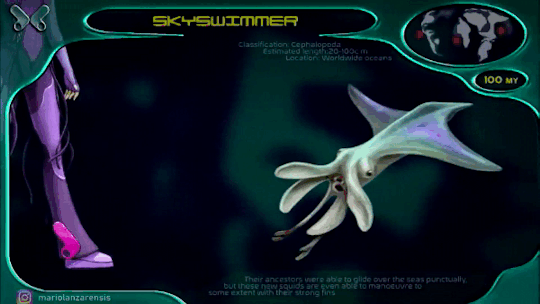
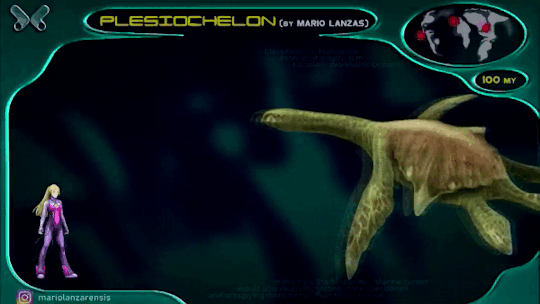
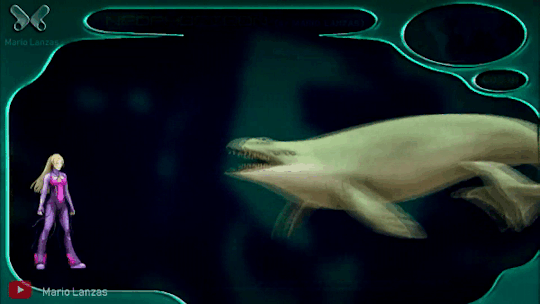






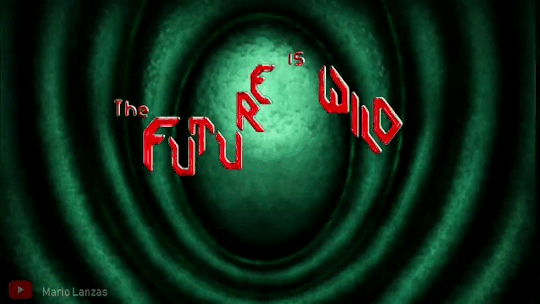
The Future is Wild 2 . (expanded universe)
It’s been over 20 years since ¨the Future is Wild¨ series aired on tv to become one of the most influential media on Speculative Evolution. In this second video I made about the series, I redesigned some of the creatures that didn't appear in the first one, and EXPANDED it's lore with more original creatures imagined by the followers of the channel. here you can see a few of them
________
Instagram
Youtube channel
131 notes
·
View notes
Text

✨ Mutation March, day 20 - Surinam toad 🐸
I've been wanting to do something with a stinking corpse lily all month, and this delightful frog was a perfect fit for me. 💖
77 notes
·
View notes
Text





fallout just makes me want to make clay things
72 notes
·
View notes
Text

The Red Wolf
Watercolor, ink, and gouache on arches paper
Approx. 5.75" x 8.75"
Original artwork will be available for viewing and sale at wowxwow.com starting Apr. 4th til Apr. 25th
Prints available: https://www.inprnt.com/gallery/mxmorgan/the-red-wolf/
570 notes
·
View notes
Text

Aggression/ Danger to humans: Low/ Medium – Low/ Medium
Element/ Ailment: None
The Copper Frillhorn, or Zalygosj Däzjuv Cj’äthal in Dhënuvgöm, is a medium-sized Frillhorn species inhabiting the grasslands of the Northern-Eastern continent of Atterra. The Copper Frillhorn is an armored dicynodont collectively known as Armor Beasts (Moldan) and contains several branches of the modern Atterran Dicynodontid family tree. It belongs to the Frillhorn (dètvetra) branch of the armor beast tree, and the forward-facing tusks denote it as part of the Front Tusk (shohak thokle) Genera of the Frillhorns. As browsing grazers, Copper Frillhorns enjoy shrubs, berries, tall grasses, and wild grains in their native ranges. They use their beak and crushing bites to snip off pieces of food and then chew by moving their jaw in a front and backward motion unique to dicynodonts.
The Copper Frillhorn relies on its heavy armor plating and horns for defense. Like other species with armored backs, the carapace of the Black-Spined Frillhorn evolved independently to combat aerial attacks from flying wyverns. The Frillhorn’s strip of lightly armored spine between the plates of its shoulders and hips offers increased mobility, but in the face of a wyvern attack, are major weak points in its otherwise sturdy armor plating. As such, wyverns will strike and cripple Frillhorns by landing directly on the spine to break it, leaving it vulnerable to attack.
The thagomizers on the tail of the Copper Frillhorn are the main point of offense the animal employs around its hindquarters. The large, bony spines are swung like a mace to severely wound or kill would-be predators and threats. Like Earth’s extinct ceratopsians, the frill is supported by bone. It is used to protect the neck of the Frillhorn from large bipedal predators like the Glorgabeast and its relatives. This defense isn’t perfect as large predators such as these, with the proper positioning, can grab onto and snap the neck of an adult Frillhorn with their large jaws. To ward off attackers, adults form defensive circles, with each individual angled to cover the one behind it with its thagomizers. This strategy also helps protect the young in the center of the circle from accidentally being cut or impaled by the thagomizers of the adults. However, the strategy’s major weakness lies in the adult Frillhorn’s inability to quickly reposition and reform their circle of defense in the event of a predator.
During mating season in the fall, bulls' posture and showing off their characteristic golden stripe on their sides as signs of health. Next, the bulls posture to one another, showcasing their frills and horns, the length of which also proves their health and fitness to breed. Should that not deter either male, both bulls will open their mouths wide to showcase their tusks before locking their large nasal horns together and rubbing them against each other to intimidate the other bull. If that fails to deter the rival, then both bulls will engage in a shoving match to try to knock down the other bull. These shoving matches can be bloody as the tusks on each bull can gore the faces and sides of their opponent, leading to many scars as each bull tries to hook and toss the other. Whoever loses the fight will lose mating rights and even their rank within the herd should they lose to a lower-ranked male. Should a bull challenge the herd master and lose, his position will be dropped down to the bottom of the hierarchy or, if severely wounded, be left behind by the rest of the herd. Due to the dangerous nature of intraspecies combat between males, many Copper Frillhorn bulls sport scars on their faces and bodies from battles throughout their lifetimes. Unlike other Frillhorns, herds of Copper Frillhorns are often between twenty to thirty adult animals: a dominant bull, his harem (and their calves), and several subordinate males. After the dominant bull, the higher-ranked males in the herd will be able to mate. Low-ranking males are typically not able to mate at all.
During this time, the usually calm and even-tempered Frillhorns become highly aggressive and attempt to chase away or kill any potentially hostile trespasser away from their dump nest. Due to this longer gestation than other Front Tusks (gestating their young for a total of 185 days on average), Copper calves are remarkably developed, being larger and more mobile at birth than their cousins. Calves are raised collectively by the cows and nurse by lapping milk secreted from milk glands on cows’ bellies for four months before weaning and moving onto solid foods. Once the calves move to solid foods, they feed on mineral-rich plants to build protective shells.
After mating in the fall and carrying their eggs for roughly one hundred and twenty-five days, Frillhorn cows lay their clutch (typically between one and three eggs) during early Spring in large communal nests called dump nests. Dump nests may hold up to thirty eggs, with male and female herd members rotating, browsing, and sitting on them to incubate and protect them from predators. During this time, the usually calm and even-tempered Frillhorns become highly aggressive and attempt to chase away or kill any potentially hostile trespasser away from their dump nest. After sixty days of incubation, calves hatch from their eggs and are collectively raised by the herd’s cows. Calves nurse by lapping milk secreted from milk glands on cows’ bellies for four months before weaning and moving onto solid foods. Once the calves move to solid foods, they feed on mineral-rich plants to build protective shells. Calves will stay close to the cows for their first year before becoming independent and potentially moving to find a new herd. Frillhorns reach sexual maturity when they are five, with females not laying their first clutch until their sixth year and males sometimes waiting until they’re ten years old before they have a high enough position in a herd to breed. By far, one of the leading causes of death among young and inexperienced Copper Frillhorns is predation by owl lions and wyverns. Both predators target small groups of Frillhorns moving between herds. Using their bone-crushing jaws and the sickle claws on their front limbs, Owl Lions slash at the necks and limbs of the young Frillhorns, like Saber-Toothed cats of Earth. Wyverns use their strength to hurl large rocks at the youngsters to break their shells and kill them instantly from the heavy impact.
Due to the generally more tolerant nature of the Frillhorn, domestication attempts by the Hakdor (and humans who stole domestic calves) have largely been successful. Frillhorns are used for their eggs, meat, and armor and serve as beasts of burden and armored transports. The Hakdor used them to transport large amounts of cargo and trade goods between their tribes, while humans similarly used them to transport boxes of different farm harvests to the farmer’s markets to be sold to the populace. Inside the walls, the horns and thagomizers of the Frillhorn are cut off and filed down so that they’re no longer a danger to those around them. This practice is not observed within Hakdor tribes, as those defenses can sometimes be the difference between life and death while moving through the wilds. The thagomizers are popular amongst humans as a type of bone ivory used to sculpt fancy game pieces or idols. The Hakdor also make use of the Frillhorn’s shells to fashion armor that gives them a hardened, bulletproof defense. Sadly, almost no one uses the domesticated Frillhorn as a significant beast of burden in the wilds, as most major Hakdor tribes that did were destroyed by humanity during the Human-Hakdor Wars. Only a select few know the joy and feeling of security when riding atop one of these large and majestic animals.
20 notes
·
View notes
Text

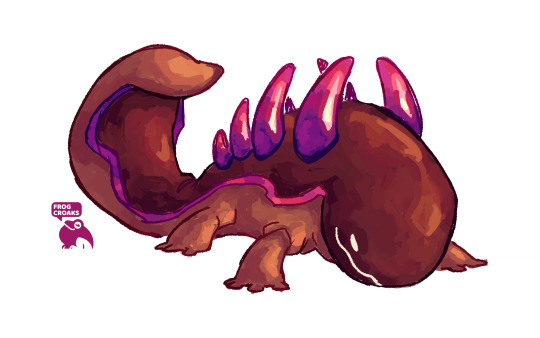

#194 (paldea) - #980. Unlike their johtonian cousin, the Clodsire line prefers wet mud and bogs to bathe on. They love getting mud on their trainers as a sign of love, and will get sad if you wash it off. Unfortunately, that mud is also very poisonous.
12K notes
·
View notes
Text

'' The Grinning Spectres, cruel and wretched dragons that call home various cliffs and sea stacks across the whole archipelago. Spectres tend to be rare in raids, unless there's a settlement right next to their preferred hunting grounds... Taking one down is such a daunting task though, they can pull a good fight, specially with their sulphurous gut-wrenching firepower. They use pulses of light at night to communicate and hunt sea birds, small dolphins and other similarly sized (preferably smaller) dragons, all part of their diet, we arent off the menu either. There's been plenty of old stories of fishing vessels gone missing because of these things, one must wonder what Hunter meat tastes like for such beasts. ''
2K notes
·
View notes
Text



Kingdom Hearts Dream Drop Distance - Lord Kyroo
74 notes
·
View notes
Text

The Forgotten Libraries are truly a breathtaking and mind boggling place. Never will you see such incredible sights anywhere else, and you would be hard pressed to find any other environment that makes you this confused. It made me so thankful to have my guides, as there was zero chance of me ever being able to navigate this place on my own. Every moment I thought I had a grasp on our location or how to retrace our steps, I would turn around and see five other paths or corridors I didn't even know were there. Or that one time we traveled for hours to see rivers of ink cascading down endless spiral stairs, but then on the way back, the En'Terns used a "one way short cut" and suddenly we were back at the collection in less then two minutes. How? I have no idea. They just pulled a specific book from the hundreds in front of us, a chunk of shelf slid away and we stepped into some kind of back tunnel that spat us out where we had started. Even when they let me use their pop-up book map, I was still completely lost when it came to interpreting it. But as it turns out, navigating this place isn't the only problem when visiting a Forgotten Library. This should have been obvious to me, but it never crossed my mind due to the sheer fantastical nature of this land distracting me, but it turns out there is some dangerous wildlife here! While there is plenty that seems charming and bizarre, there are indeed entities that haunt these halls that will totally take a chunk out of you if they can! The En'Terns carry weapons for a reason, and it isn't just for hunting!
One of the first I learned about was during our first excursion out, and I found myself constantly distracted by the thousands of books lining the shelves. So many beautiful covers or strange designs, and opening them up would reveal absolute gibberish on the pages, but then strange sections of coherence that made it all seem so much weirder. "The Night Rose, 2nd Edition" noticed me frequently pulling out books that caught my eye while we rested, and she warned me about doing that. As it turns out, there are quite a few creatures in this land that use pretty books to draw prey, and me grabbing at such tomes would inevitably lead to me getting bit. Not to mention the possibility that dislodging a "keystone book" could lead to the entire shelf collapsing, and me getting crushed under a wave of falling books. And of course she made a cryptic comment of "and sometimes the shelves are hungry..." and that put a quick stop to that behavior! Goodness, I have never been more scared of a book in my life!
But one of the creatures that made bookshelves a possible threat was the entities known as the "Parchmen." Weird beings that were flat as paper, but made of something more akin to skin. They possessed a humanoid outline, but their edges tended to stretch out into spike-like formations. The Parchmen lacked any real features on their tan bodies, no organs or things that stood out. They merely had patterns of ink drawn upon their flesh, which was said to change depending on mood and situation. Used for both communicating with others of their kind and tricking prey. With this flattened shape, they could bend, fold and roll their bodies in countless ways, taking advantage of their incredible thinness. The biggest thing they did was stuff their bodies between books on shelves, causing them to disappear from sight. When prey came close, they would spring out and envelope them in their stretchy bodies. Their pointed edges would dig into flesh and suck away fluids and essence til their victim was a dried husk. Then they would slither off, leaving the shriveled corpse behind as they found a nice place to roll up and digest.
The Parchmen are feared by the En'Terns not only for this ambush tactic, but also because they seem to target their people. Apparently the Parchmen noticed that their shape was similar, and thus the chance of using mimicry to lure En'Terns close. Stories tell of the Parchmen pretending to be a one of them from a distance, beckoning them closer or feigning an emergency that would force them to rush. They would act like someone was gravely wounded or being chased, then pouncing on those who came to their aid. Parchmen can also figure out what books or resources the En'Terns like to collect, and then jam their bodies inside the material so they can be collected and carried. Once the harvester is in a vulnerable position, they can burst out and consume them. Thus vigilance is a must when out in the Forgotten Library, and an eye for detail so you can notice when something is out of place.
Killing a Parchmen is not easy, as they lack any vital organs. The general idea is that you cut them into enough pieces til it "becomes too hard to exist." Apparently once you slice enough bits on them, they literally give up being alive and go limp. Obviously, cutting implements are a must, while their pen tipped spears are great for pinning these slippery buggers down. My guides recommended carrying a knife at all times, so that you could cut yourself free if attacked. Dead Parchmen aren't used too much as a common resource at collections, but I was told their hide is used in "Rorschamancy." This is a type of divination that is done by slowly dripping ink upon a specially prepared medium over the course of hours, with the resulting blots and shapes being interpreted to see what the future holds. It was fascinating to see them do it! To watch them so intricately describe the shapes and flow of these seemingly random blots, drawing fortunes from what looked like a simple mess! Truly these oracles are talented! (Oh I see. When they pull meaning from nonsense, they are talented, but when I do it with your disastrous notes I'm a vandal. I get such appreciation from you... - E.R.)
We did wind up encountering a Parchman during one of our trips, and it was quite the scary experience! We had stopped around some book pillars to harvest some "paper lantern fruits" that were growing from the stacked tomes. "Whispers of the Enchanted Heart" and I had climbed up to pick them, while "The Night Rose, 2nd Edition" was on the ground catching what we dropped to her and keeping an eye out for danger. "Whispers of the Enchanted Heart" was reaching for a ripe specimen when the books near their hand suddenly exploded! Pages went flying everywhere, but amongst the chaos, a papery figure had latched onto their arm. It was a Parchman that had saw an opening, and was now trying to feed on my friend! The thing was quickly trying to wrap around them, and he was trying to fight it, but the precarious perch made it difficult. I was tethered to him by a rope, as it was to help keep me from falling while traversing the shelves. I yelled for him to let go and use me as an anchor to swing closer to the ground. If he could get on solid land, "The Night Rose, 2nd Edition" could help and it would be easier to fight.
He released his grip while I latched on tight to the shelf. He swung like a pendulum, and quickly undid his tether mid swing. Closer to the ground, the impact wouldn't hurt as much, but he twisted his body to use the flailing Parchman as a cushion. Landing atop the thing wouldn't hurt it, but the sensation of hitting the wood floor hard would daze it. "The Night Rose, 2nd Edition" was on them in a flash, drawing a pen knife to start cutting away at the thing. I climbed down and hurried to help. The Parchman put up one nasty fight, even slapping me in the face a few time with its flailing limbs. With the two of us there, we were able to cut it to ribbons, and eventually it stopped moving entirely. Not before a sliced off arm tried to wrap around my face! Thankfully, those buggers don't know how sharp dryad jaws are, and I wound up biting it in half. The closest I would get to tasting Forgotten Library food, and indeed it tasted awful! Like trying to eat a scroll, but somehow it is a feisty one!
Chlora Myron
Dryad Natural Historian
-------------------------------
This is the last thing I have drawn up for the Forgotten Libraries. That doesn't mean it has all been done, it is just I got no more in the current line up. Hope to do more of the weird critters in this land in the future though! There is certainly more on my mind!
27 notes
·
View notes










